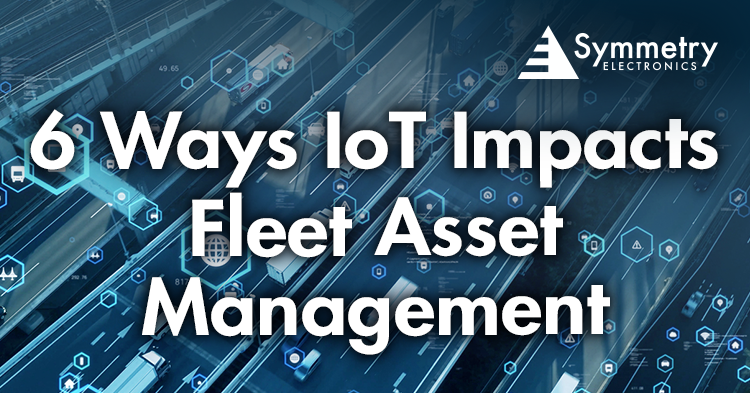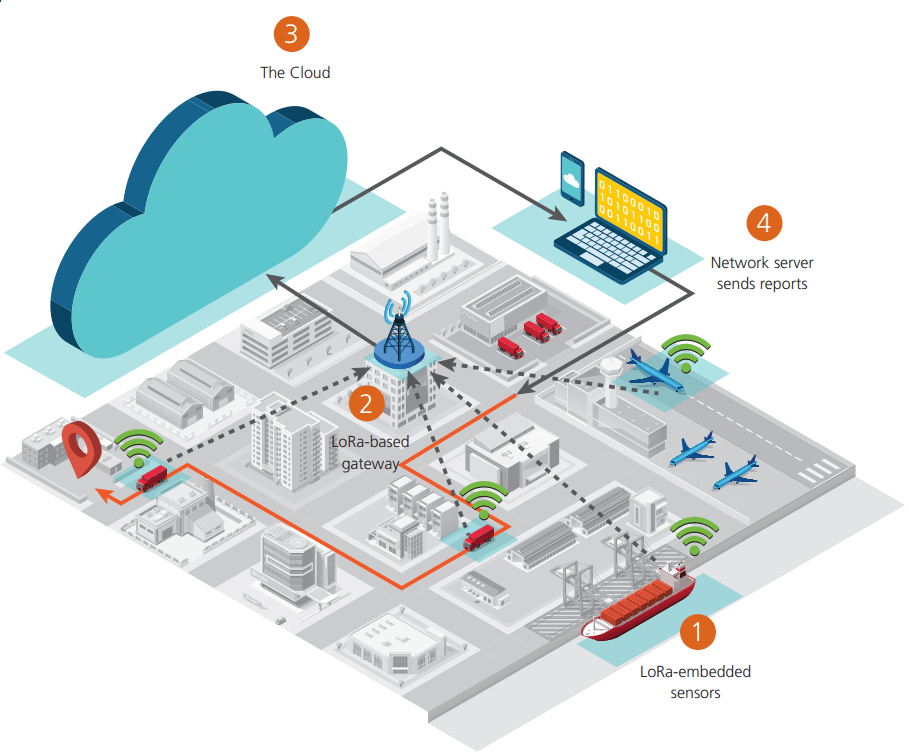- Home
- Braemac Blog
- 6 Ways IoT Impacts Fleet Asset Management
6 Ways IoT Impacts Fleet Asset Management
About Jari Haiston
.png)
Also known as telematics, fleet asset management revolves around the organized tracking of groups of vehicles and industrial equipment. Fleet asset management provides advanced analytics that aid companies in monitoring fleet performance, maintenance, and more. Incorporating an IoT into your telematics solution provides enhanced connectivity that enables a broad range of data around route, performance, passengers, drivers, and cargo that businesses can turn into actionable insights.
Fleet Asset Management through IoT
Relying on the interconnection between devices, machines, sensors, and objects to transmit/receive data, integrating IoT into telematics solutions provides enhanced automation and intelligence fleet logistics, worker safety, cost-efficiency, and productivity. Historically, cellular and satellite technology have been common connectivity methods of asset management platforms but as technology evolves, more sophisticated forms of technology have entered the market.
According to the LoRa® Alliance, LoRaWAN® solutions are the ‘logical choice’ in asset tracking connectivity. Leveraging low power wide area networks (LPWANs), LoRa® and LoRaWAN® wireless technology provide consistent and reliable connectivity in a variety of regions from dense urban environments to remote farms. When combined with smart IoT sensors used in asset tracking devices, LoRa-enabled fleet management systems (figure 1) are optimal asset tracking solutions in industrial internet-of-things (IIoT) markets like manufacturing, distribution, and construction.
Figure 1: LoRaWAN in Fleet Telematics
Source: Navixy Talks
Benefits of IoT in Fleet Asset Management Systems:
The combination of IoT in telematics makes for powerful fleet management solutions. IoT in fleet monitoring enables cost-efficiency in its ability to provide improved maintenance, logistics, safety, productivity, and loss mitigation. The following are benefits of IoT within fleet management solutions.
Enhanced Logistics:
The amount of data that IoT sensors collect in fleet monitoring can revolve around routes, mileage, power consumption can be analyzed to optimize logistics efficiency. The power of big data analytics within fleet management systems equips organizations with the intelligence to enhance route efficiency in accordance with fuel use, worker needs, and maintenance. According to Verizon Connect in 2021, “an average of 8% drop in fuel cost was reported by the users of fleet tracking technology.”
Predictive Maintenance:
IoT technology in fleet maintenance solutions allows companies to mitigate equipment failure through predictive maintenance insights. Through fleet monitoring, businesses are capable of addressing maintenance emergencies before they occur.
Improved Worker Safety:
The benefits of IoT-enhanced telematics solutions improve worker safety through the benefits of predictive maintenance and improved logistics. When vehicles are properly maintained and routes are streamlined, fleet operators are more protected in their positions. Worker proximity can be monitored in factory settings, drivers will be less fatigued with route efficiency, and businesses can ensure that only authorized users are operating fleet equipment.
Prevent Asset Loss & Theft:
Fleet asset management provides increased asset security. IoT sensors and edge-based solutions provide increased visibility surrounding equipment. Workers are more aware of cargo loads and data can be utilized for enhanced training. IoT-enabled fleet management means knowing where your assets are in a real-time environment.
Improved Productivity:
Enhanced logistics, predictive maintenance, safer work environments, and loss prevention provide reduced downtime in the workplace. Businesses are able to see improved productivity when equipment is functioning properly and logistics are streamlined in a safe work environment.
Greater Savings:
The top benefit of IoT within fleet asset management is a culmination of all its other advantages. Enhanced logistics, predictive maintenance, improved worker safety, loss mitigation, and reduced downtime all lead to greater savings!
Use Cases for IoT-Enabled Fleet Management:
In the industrial sector, IoT-enabled fleet asset management systems support a wide range of applications and use cases like:
- Driver management
- Fleet maintenance
- Asset and cargo management
- Vehicle monitoring
- Passenger information
Are you ready to integrate IoT solutions into your fleet asset management system? Contact Symmetry Electronics today!

